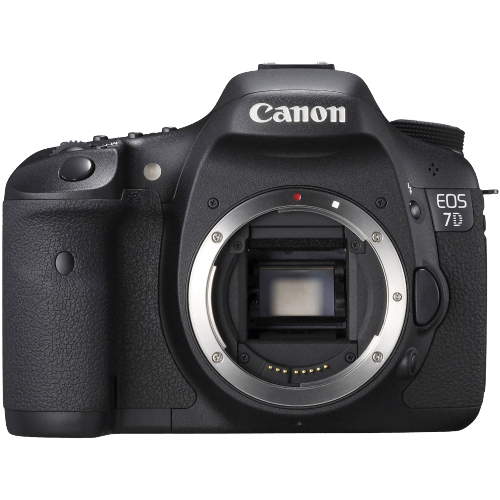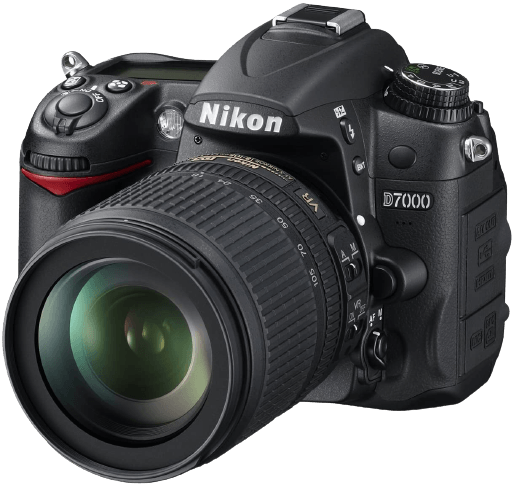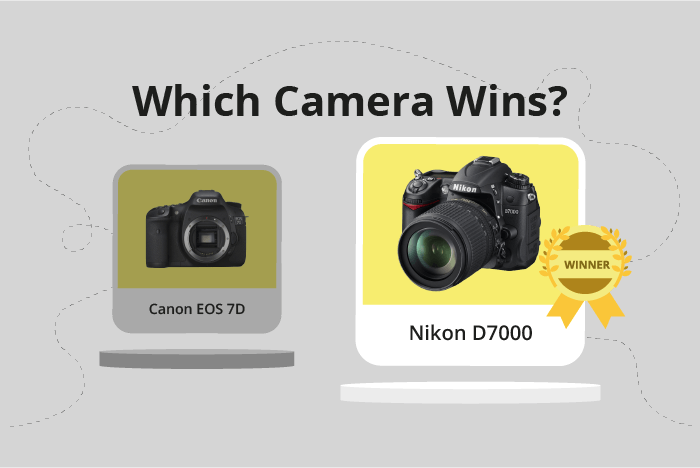Canon EOS 7D vs Nikon D7000 Comparison
Canon EOS 7D

Nikon D7000

The Nikon D7000, scoring 56, outperforms the Canon EOS 7D, which has a score of 45. Both cameras are DSLRs released in 2009 and 2010, respectively. They share similar specifications, such as camera type and announcement dates. The Nikon D7000 has a more affordable launch price at $1200 compared to the Canon EOS 7D’s $1974. Additionally, the Nikon D7000 is smaller and lighter, measuring 132 x 105 x 77mm and weighing 780g, making it more portable than the Canon EOS 7D, which measures 148 x 111 x 74mm and weighs 860g.
Despite the lower score, the Canon EOS 7D offers a few advantages, such as a slightly slimmer body. However, the Nikon D7000’s better score, lower price, and more compact size make it the winner in this comparison.
Canon EOS 7D vs Nikon D7000 Overview and Optics
The Nikon D7000 outperforms the Canon EOS 7D in optics, scoring 55 out of 100 compared to the Canon’s 43. Both cameras share a number of specifications, including the CMOS sensor type, APS-C sensor size, and the lack of image stabilization. They also have their own lens mounts, with the Canon using the EF-S mount and the Nikon using the F mount.
The Nikon D7000 excels with a higher DXOMARK score for its sensor, achieving 80 compared to the Canon’s 66. This difference highlights the superior image quality produced by the Nikon camera. Additionally, the Nikon D7000 features the Expeed 2 processor, which contributes to its better performance in optics.
On the other hand, the Canon EOS 7D has a higher megapixel count of 18, compared to the Nikon’s 16.2. This allows the Canon to capture more detail in images. The Canon also has a faster shooting speed of 8 frames per second, compared to the Nikon’s 6, making it better suited for capturing fast-moving subjects.
Despite these advantages, the Canon EOS 7D falls short in overall optics performance when compared to the Nikon D7000. The Nikon’s superior sensor quality and processor make it the better choice for photographers seeking top-notch image quality. While the Canon EOS 7D may capture more detail and handle fast-moving subjects better, these benefits do not outweigh the Nikon D7000’s overall better performance in optics.
Canon EOS 7D vs Nikon D7000 Video Performance
The Nikon D7000 outperforms the Canon EOS 7D in video capabilities, with a score of 57/100 compared to the Canon’s 43/100. Both cameras share some common specifications, such as Full HD video resolution and maximum video dimensions of 1920 x 1080. However, there are notable differences that set the Nikon D7000 apart.
The winning camera, the Nikon D7000, has a lower maximum video frame rate of 24fps, compared to the Canon EOS 7D’s 30fps. This may seem like a disadvantage, but it depends on the user’s preference. Some people prefer the cinematic look of 24fps, which can produce smoother and more natural motion. The Nikon D7000 also has a built-in time-lapse functionality, which is a useful feature for creating time-lapse videos without the need for additional equipment or software.
On the other hand, the Canon EOS 7D has a higher maximum video frame rate of 30fps, which can be beneficial for those who prefer a crisper and more detailed motion in their videos. However, the lack of built-in time-lapse functionality makes it less versatile in comparison to the Nikon D7000.
In terms of video capabilities, the Nikon D7000 is the better choice due to its built-in time-lapse functionality and the preference for a cinematic look with a 24fps frame rate. The Canon EOS 7D, while having a higher frame rate, falls short in versatility and may not be the ideal choice for those seeking advanced video features. The choice ultimately depends on the user’s priorities and preferences in video recording.
Canon EOS 7D vs Nikon D7000 Features and Benefits
The Canon EOS 7D and the Nikon D7000 both have a feature score of 54 out of 100, making it a tie in terms of their overall feature set. Both cameras share several specifications, including a 3-inch screen size, lack of touchscreen, flip screen, GPS, and Bluetooth capabilities.
However, there are differences that set these cameras apart. The Nikon D7000 has a slightly higher screen resolution at 921,000 dots, compared to the Canon EOS 7D’s 920,000 dots. Additionally, the Nikon D7000 offers Wi-Fi capability, which is absent in the Canon EOS 7D. This feature allows users to easily transfer photos and control the camera remotely, providing a clear advantage for the Nikon D7000.
On the other hand, the Canon EOS 7D does not possess any notable features that surpass the Nikon D7000. Both cameras share a similar set of specifications, resulting in a tie in terms of their overall feature score.
Taking these factors into account, the Nikon D7000 demonstrates a slight edge over the Canon EOS 7D, primarily due to its Wi-Fi capability and marginally higher screen resolution. However, it is essential to consider personal preferences and specific needs when choosing between these two cameras, as their feature scores and specifications are mostly identical.
Canon EOS 7D vs Nikon D7000 Storage and Battery
The Nikon D7000 takes the lead in storage and battery with a score of 79/100, while the Canon EOS 7D trails behind at 35/100. The Canon EOS 7D accepts Compact Flash (Type I or II), UDMA, and Microdrive cards, while the Nikon D7000 is compatible with SD, SDHC, and SDXC cards. The D7000 accepts two memory cards, while the 7D has just a single slot. Neither camera supports USB charging.
The Nikon D7000 outperforms the Canon EOS 7D in battery life, providing 1050 shots per charge compared to the Canon’s 800 shots. This longer battery life makes the Nikon D7000 a more reliable option for extended shooting sessions. The Canon EOS 7D, however, offers compatibility with high-speed UDMA cards, which may be advantageous for some users.
Considering the storage and battery aspects, the Nikon D7000 proves to be a better choice due to its longer battery life. The Canon EOS 7D’s compatibility with UDMA cards may be beneficial for certain users, but it does not outweigh the advantages provided by the Nikon D7000’s superior battery performance.
Canon EOS 7D vs Nikon D7000 – Our Verdict
Are you still undecided about which camera is right for you? Have a look at these popular comparisons that feature the Canon EOS 7D or the Nikon D7000:

